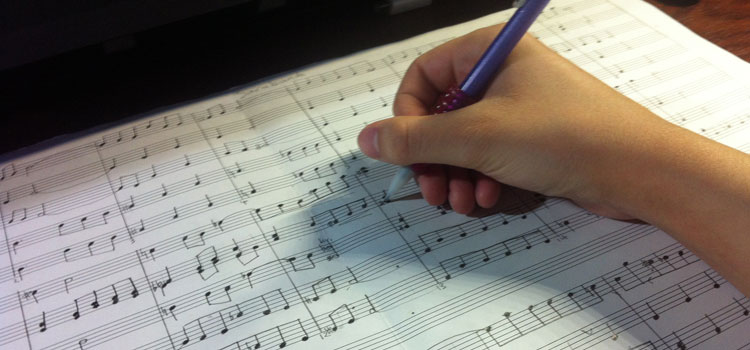

My set of texts all involve the composing of music. I would use these texts in a high school general music classroom, either about composition, or as part of a composition unit. These students do not have to have a background of musical knowledge, so the course would need to take time to introduce basic musical concepts about notation and musical elements. These texts are meant to give the students insight into how various composers go about writing their music and some technical strategies they use.
Multimedia:
Ben Folds Composes a Song LIVE for Orchestra in Only 10 Minutes
https://www.youtube.com/watch?v=BytUY_AwTUs
How to Compose Music - Lesson 1 - How to Write a Melody
From: Art of Composing on YouTube.com
Text Summary: This video serves as a lesson, and is focussed on how to write a melody. The author begins by defining a melody and what it does in a piece. Later, the author describes how to make a melody conform or fit into harmony, and ways to develop the melody into more musical material.
Text Complexity:
Quantitative- Storytoolz labeled this text as grade seven. I assumed it would be around this level, if not a little higher to 8th or even 9th grade, because the author explains the definitions that they use quite well. Words that may be needing of an explanation include: motive, harmony, rhythm, and conform.
Qualitative- The qualitative complexity of this text is around a grade eight or nine. This is because the core concept of creating a melody is very simple, however, there is a lot of subject specific language that is used. Besides simply writing the melody, the author goes into developing the melody, which has a lot of variables and can add a lot of complexity.
Reader and Task- I would have these students simply create a melody that is at least two measures long, then create a harmonic structure to accompany it.
Culturally Relevant:
Stranger Things Composers Break Down the Show's Music
Do androids dream of electric beats? How AI is changing music for good
From: The Guardian, written by Tirhakah Love, 10/22/2018
https://www.theguardian.com/music/2018/oct/22/ai-artificial-intelligence-composing
Text Summary:
This text discusses the topic of using artificial intelligence to compose music. It also talks about the role AI has in popular streaming services like Spotify. Other topics include the history of AI composition, who is working with this technology currently, and questions this technology poses for the future of music and AI.
Text Complexity:
Quantitative- The average grade level for this text is 12.1. I agree with this assessment, because there are some pretty complicated words in this text. Some vocabulary that might require attention in class include: theoretician, perpetuating, innately, parameters, semblance, and algorithms.
Qualitative- I would estimate this text to be around a grade level 12 because of the subject this text deals with, and the critical thinking it poses. It combines current events in technological advancement and how they relate to the medium of music. It also requires prior knowledge about streaming softwares and musical terminology like beat and musical styles and composers.
Reader and Task- For this reading, the task to be paired with it would be discussing students' thoughts on artificial intelligence as a whole and if it has a place in musical composition. This would involve students presenting their opinions and arguments, which is a fairly complex task, but attainable for high schoolers. This task can involve having prior knowledge of composition or AI, but it is not necessary for the discussion.
Print:
Practical Guides - A Beginner's Guide to Composing
http://www.bsmny.org/exploring-music/features/practical-guides/a-beginners-guide-to-composing/
From: Bloomingdale School of Music website, written by Nadje Noordhuis
Text Summary:
This text is a step by step process on how to compose for beginners. It lists the materials needed for the activity, and has steps that a composer needs to think about to start their composition. These include choosing a style and form of the piece before creating a melody and developing that theme. A great feature of this article is that it has listening examples that the author wrote while going through these steps in the article.
Text Complexity:
Quantitative- Storytoolz found this text to be an average grade level of 7.6. The text is concise and uses simple language, so I agree with this assessment. Difficult vocabulary might include: instrumentation, chord progression, bassline, riff, and motif.
Qualitative- I would call this text a ninth to tenth grade level because it is organized in a step by step format, but there are some difficult concepts discussed. Each step listed in this article will probably have to be explained further in class, because even though the author does a good job with their language, these concepts might not be known to the students.
Reader and Task- This article lends itself well to an introductory composition activity. It would be good after reading and doing the activity video on how to write a melody. This task is pretty complex and will take multiple class periods to complete. It will also be at the end of a course or unit on composition.
5 Big Misconceptions About Composing Music
https://soundbridge.io/5-biggest-misconceptions-composing-music/